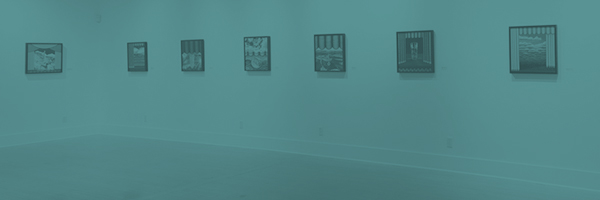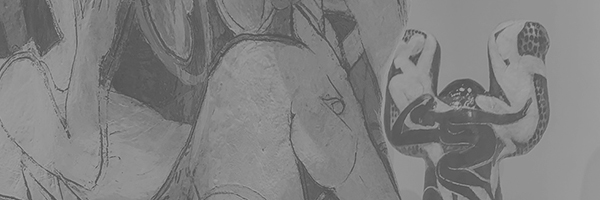History of
The Emerson
The Building at 111 South Grand Avenue
The Emerson building is imbued with local history and a charming character. Chartered to welcome, engage, and educate the children of Bozeman, the Emerson Center for the Arts & Culture has retained those goals through its evolution from a school into an art hub for all ages.
A Lasting Institution is Built
The English-Gothic edifice was constructed from 1918 to 1920 for $93,000 and designed by Fred Willson, a beloved Bozeman architect.
The Emerson School was named after Ralph Waldo Emerson, an American philosopher, poet, educator, and abolitionist. This attribution foreshadowed what the institution would come to represent. A leader of the 19th-century Transcendentalist movement and an advocate of Individualism, Ralph Waldo Emerson (or Waldo as he was often called) celebrated freedom, independent thought, and self-realization. It is by experimentation and personal reflection that humanity can discover its potential.
Waldo's assertions are liberating for artists and creative people who identify individuality as the source of creativity and achievement. Through children developing critical thinking skills, to artists engaging in self-expression, the Emerson's legacy has been honored for over 100 years.
Through the School Years
In 1936, a new annex was funded by the Work Projects Administration. Fred Willson stepped up to the drafting table once again, and the West Wing of the Emerson was added. In 1951, the lawn was established: instead of thick weeds that were cut once a year with a horse-drawn plow, grass was planted.
For 73 years, the energy, joy, vivacity, and youth of thousands of kids permeated all 75,000 square feet of the school. Playful relationships developed between students and teachers, like the annual “Peanut Shower.” Through word of mouth, students chose a day to arm themselves with peanuts and throw them at defenseless faculty. Anecdotes about basketball tournaments; line dances; a speech from Jeanette Rankin (the first female US Senator) about the threats of WWII; a bathroom stop by Eleanor Roosevelt; and the clever antics of Emerson students and staff alike seeped into the collective history of Bozeman.
In 1992, the last pupils said goodbye to the aging monument of education.
Willson himself once stated, "... an architect's business is to make the things of daily life beautiful." In its next manifestation, the Emerson would become saturated with people who shared that very same purpose in their own practices.
An Art Center is Born
Always advocating for accessibility to the arts for all people, the Emerson Center for the Arts & Culture galvanizes creative expression through various forms and techniques. More than 250,000 guests visit Emerson each year.
Older generations take their children to the Emerson and share in some of their favorite Bozeman traditions. Memories of field trips, dance recitals, Lunch on the Lawn, Art Walks, or building Christmas Stroll gingerbread houses are cemented in the local culture. Families freshening up their homes find inspiration at the Garden and Homes Tour. For years, the annual Ice Fest has made the Emerson it's home base. Winter sports lovers are awed by ski documentaries displaying the most daring snowboarders, skiers, and powder athletes. Discussion panels and guest speakers open dialogue to current social issues relevant to our community.
The Frances Senska Pottery Studio and Emerson art education classrooms have introduced curious minds, young and old, to a lifelong love of making art. The diversity of interests and creativity of the community that gathers here is a reflection of the Emerson's status in the heart of Bozeman.
The old Emerson School building may be on the National Register of Historic Places, but what is truly profound is the vitality that continues to emanate within its walls.
Other Historical Facts
- Fred Willson also designed the Baxter Hotel; the Gallatin Jail (which is now the Historical Society and Pioneer Museum off Main St.); the Hamill and Blackmore Apartment buildings; and many buildings on MSU campus such as the Strand Union Building and Herrick Hall. With funding from the New Deal in 1936, Willson designed the current Longfellow, Hawthorne, and Irving schools, and the Emerson annex.
- In the early 20th century, Montana children were expected to help with the autumn harvest. The Emerson School was closed in the fall of 1919 so children could assist in the field.
- Around 1919, the school was closed again due to a national flu epidemic and became a care center for the sick.
- Eleanor Roosevelt stopped by the Emerson during her Worldwide Campaign for Hunger. She used the restroom during her stop. For years, there was a sign that read “Eleanor Roosevelt sat here” in the restroom.
- Basketball tournaments were very popular in the school. 7th and 8th-grade homerooms played against other homeroom classes in their grades. Principal Esther Rulien chose the best players to be in her homeroom so she always had the winning team.
- Early in the school’s history, each class had 30 - 40 students.
- The Emerson School mascot was named somewhere between 1950-1957, In the office of Esther Nelson (a clerk), there was a mouse that would come visit her every morning from its post beneath the radiator. She fed it graham cracker crumbs and it became not only a pet, but the school mascot. (The Emerson building no longer has mice.)
- From 1955-1983 the building in Beall Park was a nursery school. Then it became the Beall Park Art Center, with the Jessie Wilber Gallery on the first floor and the Frances Senska Pottery Studio in the basement. In 2007, the building started being used for Recreation Department offices, so the gallery and the studio were moved to the Emerson.





